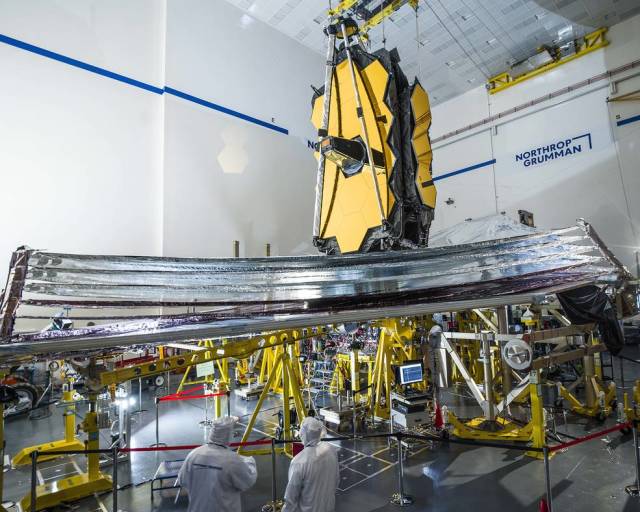Washington. November 23. INTERFAX - The launch of the James Webb space telescope is postponed from December 18 to December 22 due to an incident in the vertical assembly workshop during the preparation of the device for launch, NASA reported.
"The launch date of the James Webb telescope is postponed no earlier than December 22 for additional inspections of the telescope due to a recent incident that occurred during the preparation of the telescope for launch," NASA said in a statement.
According to NASA, the incident occurred at the facility of the Arianespace company responsible for the mission, located at the Kourou cosmodrome in French Guiana.
"Specialists were preparing the telescope for docking to the transition compartment of the Ariane-5 launch vehicle. However, as a result of the sudden unplanned unfastening of one of the clips that holds the telescope docked to the transition compartment, a vibration wave passed through the entire telescope," NASA explained.
It is noted that a joint commission headed by NASA was convened to investigate the incident, which will conduct additional tests to determine whether any damage was done to the device.
The commission's report will be published at the end of this week, NASA said.
According to the plan, James Webb is to launch from the Kourou cosmodrome in French Guiana on an Ariane-5 carrier rocket developed by the European private company Arianespace.
According to the developers, the rocket should put the device into orbit, after which Webb will independently continue the four-week journey to its destination - the second Lagrange point of the Sun-Earth system.
Having reached the planned orbit, James Webb will begin space exploration to search for the causes of the formation of the universe and signs of potential life on thousands of exoplanets discovered by scientists in recent years. NASA is taking part in the mission, as well as the European Space Agency (ESA) and the Canadian Space Agency (CSA).
James Webb was developed in order to continue and complement the Hubble Space Telescope research, having a larger wavelength range coverage and improved sensitivity (100 times) compared to it. The telescope is equipped with a number of spectrographs, coronagraphs and cameras for a better study of the Solar System than its predecessors.

